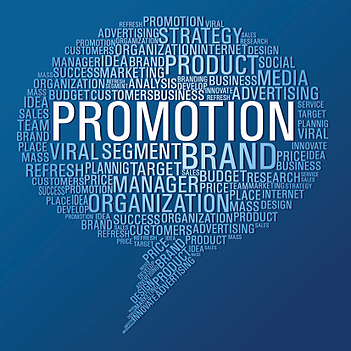 You already experience native advertising, you just don’t know it. If you’ve been researching this whole internet marketing thing for your small business you might have come across the term “native advertising.” It’s what we like to call a “fuzzy” term, meaning it’s used a lot, but the true meaning is not always fully known or understood. Today’s internet marketing tips will help explain native advertising and why it may or may not be a good advertising source for your small business.
You already experience native advertising, you just don’t know it. If you’ve been researching this whole internet marketing thing for your small business you might have come across the term “native advertising.” It’s what we like to call a “fuzzy” term, meaning it’s used a lot, but the true meaning is not always fully known or understood. Today’s internet marketing tips will help explain native advertising and why it may or may not be a good advertising source for your small business.
What is Native Advertising?
It’s a form of paid media that appears as sponsored content and seems to naturally belong in the place where it shows up. (Source: PR Web). It can show up as:
- Blog post
- Video
- Advertorial
- Sponsored post
- Photo Stream
- Interactive Graphic
Native advertising focuses on user experience, provides relevant content to the user that shows up in-stream, and doesn’t interrupt flow; users are more engaged and everything on screen seems natural and appealing.
Common Examples of Native Advertising
In a world that offers customers unlimited options for where they get their information and how they consume it, businesses are looking for new ways to get customers to see what they have to offer. Traditional display advertising that’s been used in the past, such as banners and pop ups, perform poorly and have minimal appeal to consumers. They are annoying and disruptive. In fact, 99.8% of banner ads are ignored (Source: Mashable). While traditional display advertising takes away from the user experience, native advertising seeks to add to it in an ever so slight way. Take a look:
Sponsored stories on Facebook
Here is an example of what a sponsored story looks like on Facebook.
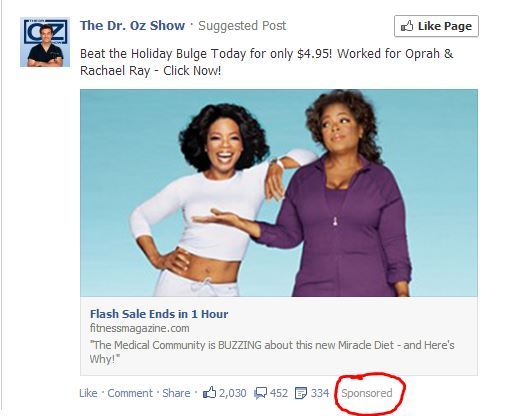
As I was nonchalantly scrolling through my Facebook news feed, this just happened to show up between a photo of a friend her Greenbay Packers jersey gearing up for the game, and a news story posted by The Huffington Post, a page that I “liked” on Facebook at some point. Now, I don’t pay much attention to Oprah or Dr. Oz, but I do like pages that relate to health and fitness, and the advertisers for the Dr. Oz Show know that, which is why this post showed up in my feed. You know when a post is “sponsored” because it says so in gray writing at the bottom of the post.
Promoted Tweets on Twitter
Same is true for promoted tweets on Twitter. I’m a devoted Google user, but that doesn’t mean that Bing won’t try to lure me away. I also often listen to Pandora on my computer. Now, I don’t know if Bing knows this or not, but the tweet is relevant to me because it has to do with the latest songs I could play right from Bing.
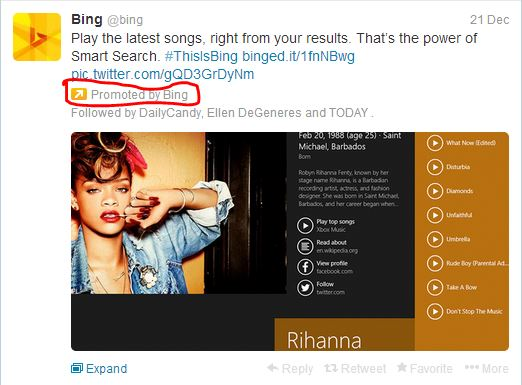
I don’t feel annoyed or interrupted by either form of native advertising above because the topics interest me and casually show up as I’m scrolling through. This gives me the choice of whether or not I want to click on the ads, perhaps best summed up by Advertising Pioneer Howard Luck Gossage: “Nobody reads advertising. People read what they want to read, and sometimes it’s an ad.”
This infographic also does a good job explaining native advertising:
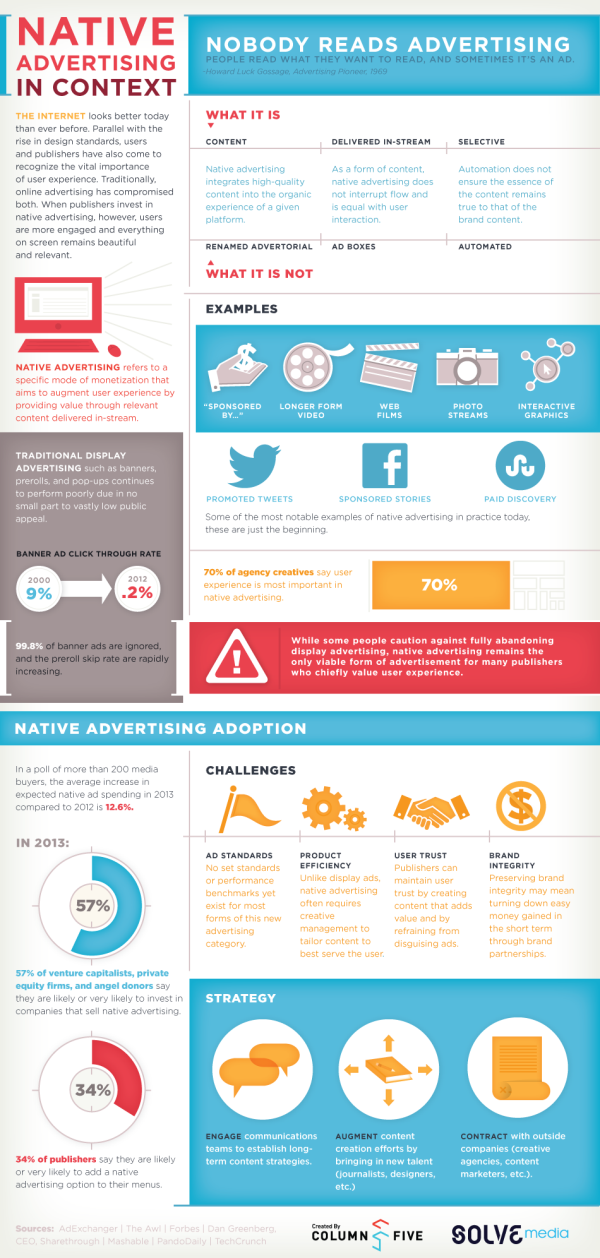
Is Native Advertising a Good Idea for Your Small Business?
This is best determined by looking at your overall internet marketing strategy. Native advertising isn’t something to start just because it’s something you’ve been hearing more about or other businesses are doing it, but instead to implement when and if it’s right for your business. You will want to consider things like:
- If you have active social media accounts in place and people engaging with them
- The right budget set aside and applicable research done
- An internet marketing consultant to advise you on the ethical issues, pricing, and scalability
Spending on native advertising in the U.S. was up by over 71 percent this year over last year, and by 2017 it will account for 42 percent of all social media spending (Source: AdAge).
While native advertising is a new way to get your business in front of customers it’s important to remember that it’s just one small piece of a larger internet marketing strategy. Its effectiveness depends largely on your industry, the size of your business, and the efforts you already have in place. If you’d like to implement or expand your internet marketing strategy, contact us at Half a Bubble Out. We’d love to chat!
Do you think your business will invest in native advertising this year?
Related Posts:
Why is Twitter Important in Your Social Media Marketing Strategy?



